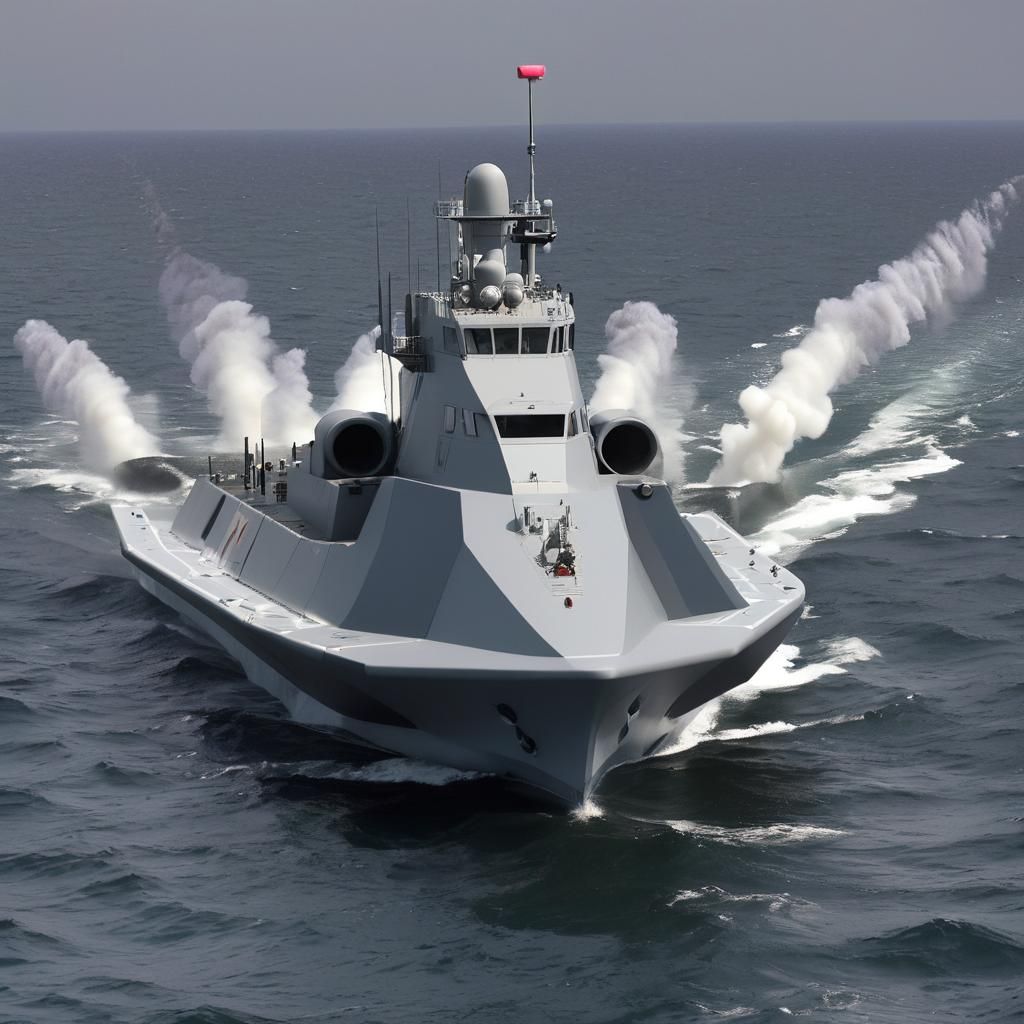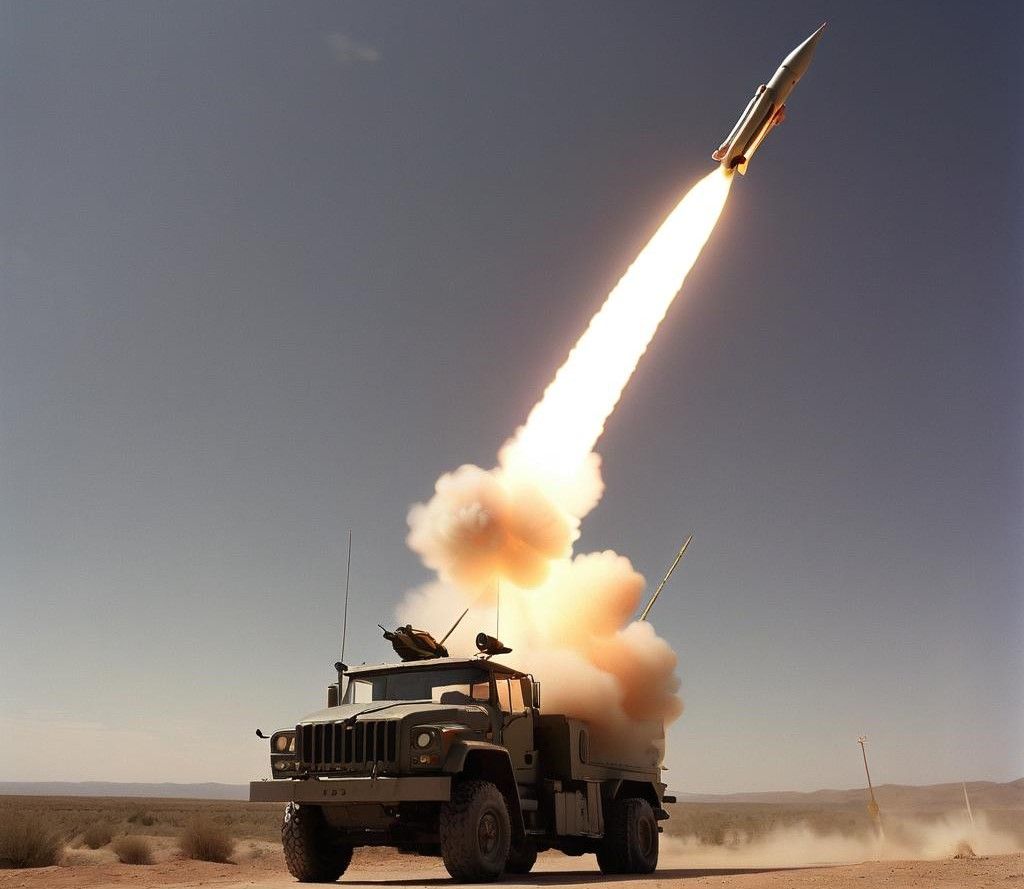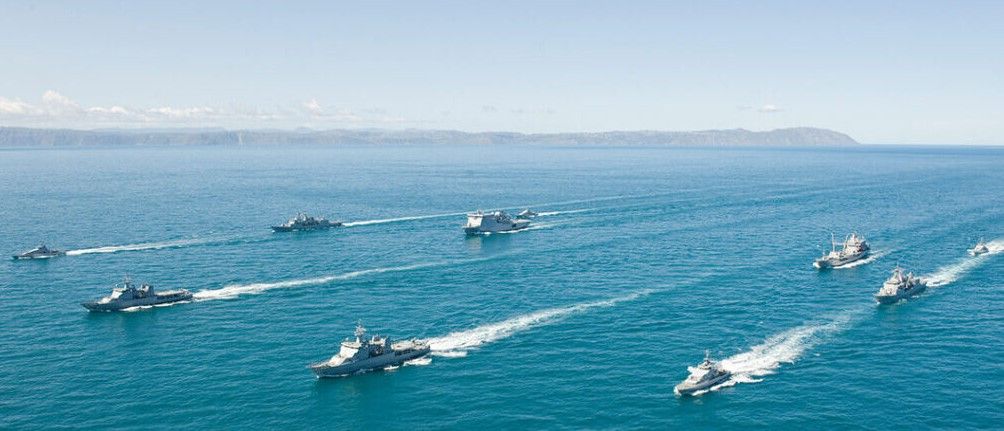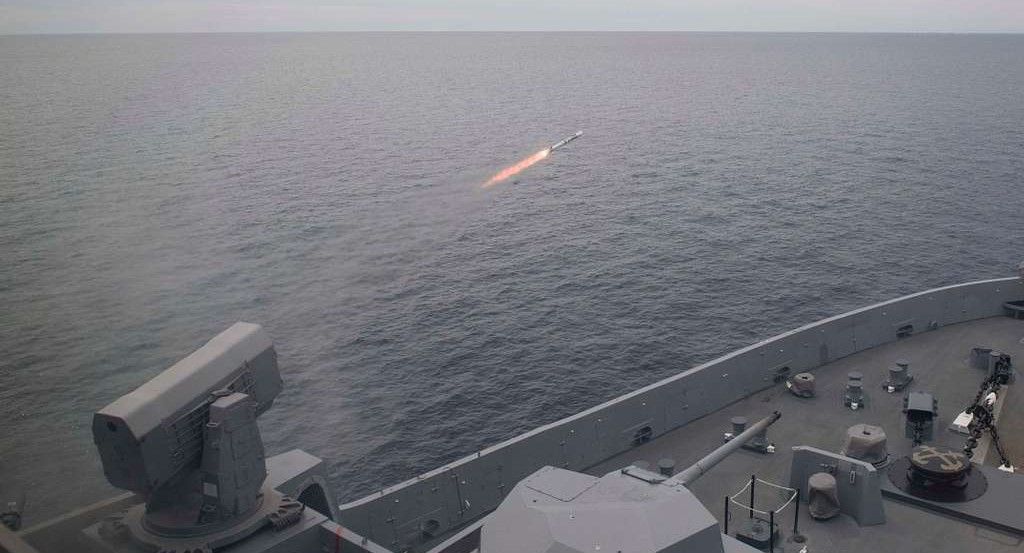Counter-Drone Capability Heads to Sea
The next step in the development of anti-drone armament is naval defence.

The development of drone technology has been fast.
Two years ago, when Russia invaded Ukraine, their role was based on reconnaissance and eye-in-the-sky troop surveillance with the occasional precision strike on distant, single targets.
Fast-forward through many months of bitter trench warfare and drone use has become an essential part of the fight with their roles now far-reaching and varied.
With extended flight times, drones now attack military bases, power stations, port facilities, and oil refineries hundreds of kilometres behind enemy lines. Smaller, handheld drones have been developed and are used in house-to-house fighting, larger drones have become vital spotters ensuring the accurate use of artillery, land-drones are being used to transport supplies on dangerous routes to the frontline, to attack fortified trench positions, or to carry wounded soldiers back to safety.
Even more impressively, drones (both airborne and on the water) have been used to sink billion-dollar warships.

This final development of drones as anti-ship armaments has opened up a new necessity for naval commanders – counter-drone weaponry to protect ships.
The simplest route for this is to make anti-drone weaponry designed for use on land suitable for use on ships.
One clear example of this transition has been the truck-mounted Vampire (Vehicle Agnostic Modular Palletized ISR Rocket Equipment) counter-drone system. Funded by the Pentagon with $40 million, the arms manufacturer L3Harris Technologies sent 14 of the systems to Ukraine where their mobility, WESCAM MX-10 RSTA targeting sensor, and an Advanced Precision Kill Weapons System rocket and launcher were put to use – most notably a few months ago in shooting down a Russian Shahed drone.
With this success, L3Harris and other manufacturers of counter-drone systems are looking at ways to transfer the land-based system so that it could work onboard a ship. With shipboard space limited, an alternative development would be to transfer the technology to a stand-alone uncrewed vessel, as this would also allow advanced protection against drones for a ship or fleet.

While such an anti-drone system will have obvious applications in the Black Sea, American funding is aimed more at opposing the Houthi forces in Yemen who are still attacking shipping in the Red Sea. Specifically, the Houthis are firing drones, ballistic missiles, and cruise missiles against targets both on land and at sea, making it difficult for the U.S. Navy and other international forces to maintain security in the region. Furthermore, as the engagements continue, defensive naval forces are having to consider the cost of eliminating targets. Is it worth using a $2 million dollar missile to shoot down a $50,000 drone?
The application of a seaborne anti-drone system could make defending ships in the Red Sea much more cost effective.

As Jon Rambeau, the president of L3Harris’ Integrated Mission Systems asks, “How could you take a Vampire kit and put it on a small, unmanned surface vessel and deploy that in the ocean as part of layered approach to defending shipping and military ships?”
In a recent interview with Defense News, Rambeau denied that any concrete agreements for the project’s development have been made. Explaining how, “It’s more conceptually, could you do this? Yes we could. Could you do some preliminary design work? Yes we can. So, we’ve done some of that, and now there’s discussion [on] how fast could we field that and what would that look like, what would it cost, when could we get them.”
To the untrained eye, transferring a counter-drone weapon from the back of a pick-up truck to the back of a small boat may sound simple. But as Rambeau notes, it is not entirely straightforward.
“Making sure that the vessel has sufficient stability to withstand the thrust of the rocket as it leaves the launcher; making sure that the vector of the exhaust from the rocket isn’t damaging part of the vessel itself — so just some of the configuration, orientation, stability” issues to work through, Rambeau said. “But we think all of those things are manageable.”
Even if the move to naval defence proves impractical Rambeau is confident in the success of the business as the drone and counter-drone sector goes from strength to strength. The Vampire system has received a great deal of positive feedback from troops on the ground and with no end in sight for the war in the Black Sea or for attacks in the Red Sea, demand remains strong.
Photo credit: Gencraft, Garystockbridges, Roarnews, & Gencraft

